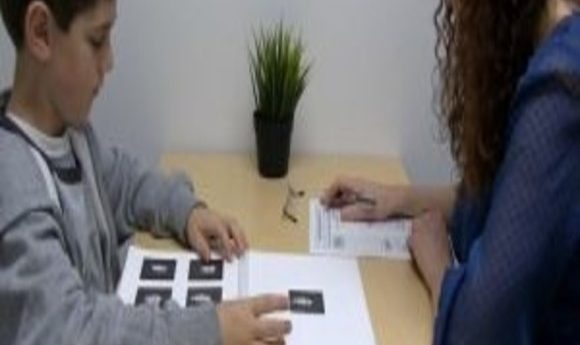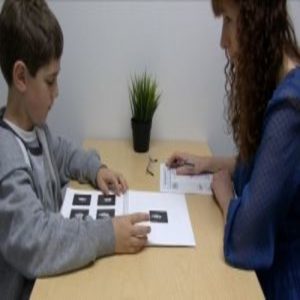How we grow to recognize faces

Our ability to remember familiar faces increases with age, but how does our brain change to develop this important skill?

Grill-Spector tests a child’s facial recognition abilities.
Image courtesy of Kalanit Grill-Spector.
As the human body develops and learns how to walk, read, and memorize, the brain grows to accommodate these new skills. However, how changes in brain anatomy correlate with skill development is not fully understood, especially for high level abilities like recognizing faces and places.
“People recognize other people usually from their faces. Understanding how the brain does it, for me, is the number one puzzle,” said Kalanit Grill-Spector from Stanford University.
Previously, Grill-Spector and her team determined that regions in the brain responsible for identifying faces and places take a long time to develop. Now, by combining behavioral studies with functional and quantitative magnetic resonance imaging (MRI) in brains of children and adults, Grill-Spector and her team report in the journal Science how brain anatomy changes with increasing ability to select faces and places.
Measuring anatomical changes in face- and place-selective brain regions requires high-resolution imaging in awake humans—a feat that has been impossible until recently. Grill-Spector teamed up with Aviv Mezer from Stanford University who recently developed a new method called quantitative MRI (qMRI), which measures the amount and composition of tissue in a specific brain region.
Knowing that brain function increases in regions important for processing faces and places during development, Grill-Spector’s team measured brain tissue in areas important for recognizing both faces and places in children and young adults. “What we find is that, from childhood development, there’s more [tissue] in the face-selective region but not in the place-selective region,” said Grill-Spector.
The researchers verified their findings by comparing the tissue increases observed using qMRI in living subjects with post-mortem histological brain slices. “It was really only in the last year that we’ve been able to link data in living brain and data in histological slices of dead brains,” said Grill-Spector. Indeed, she and her team confirmed that brain tissue grows with increasing facial recognition but not place recognition.
The impact of Grill-Spector’s work extends beyond finding a link between brain anatomy and function. “The combination of techniques is very exciting. This study lays out a potentially very impressive and powerful paradigm to study structure-function-cognitive relationships,” said Avniel Ghuman from the University of Pittsburgh who was not associated with this study.
The team plans to continue using their novel combination of behavioral, functional, and anatomical measurement techniques to determine changes in brain tissue development over time by monitoring children as their ability to recognize faces grows.